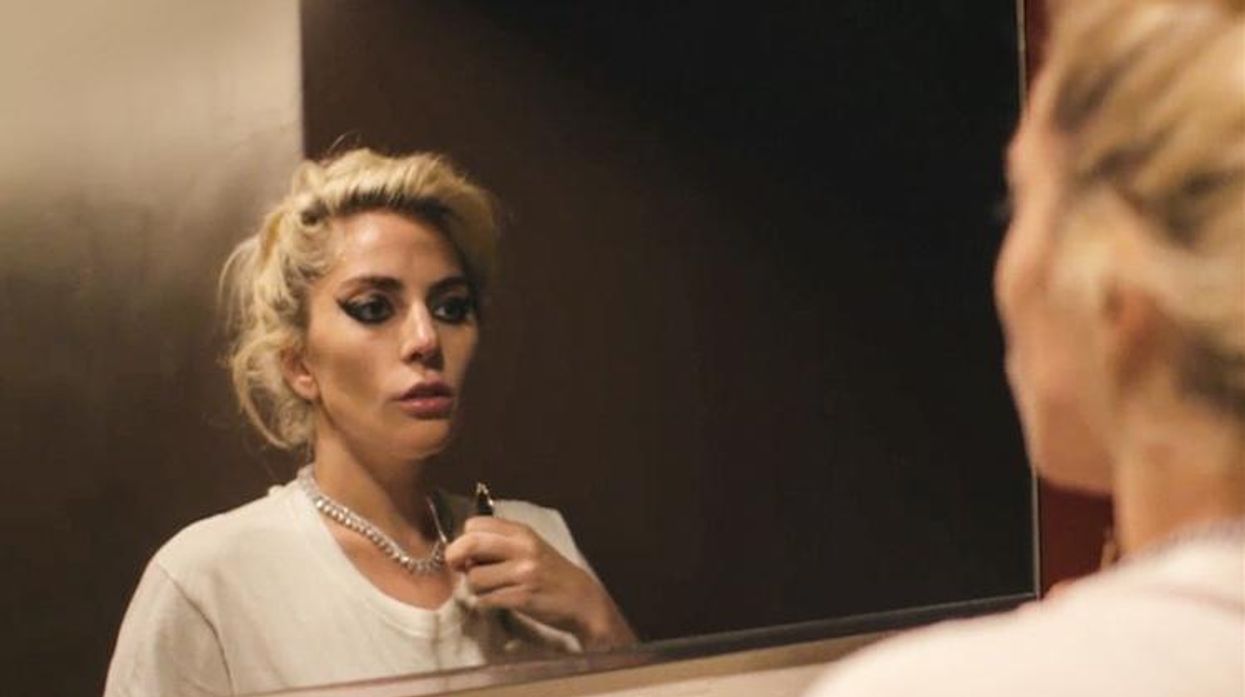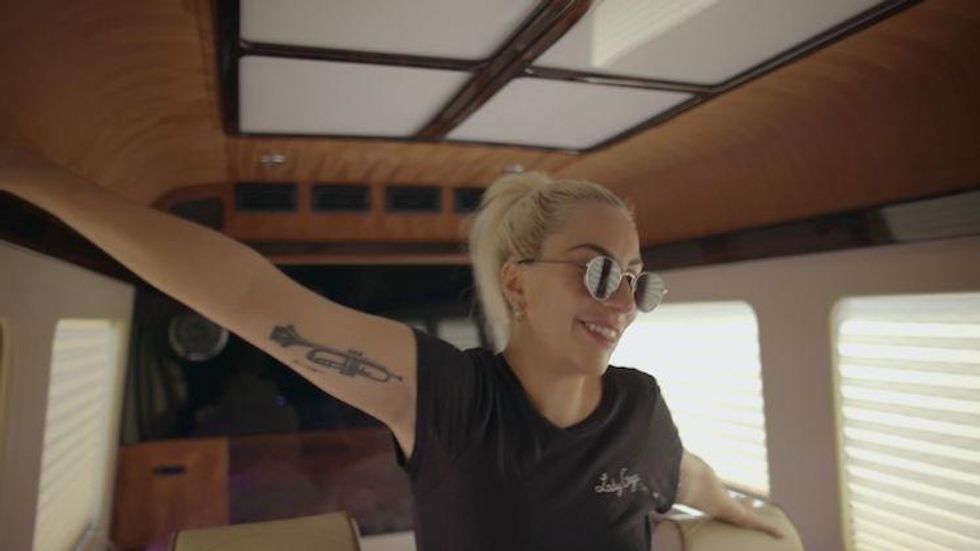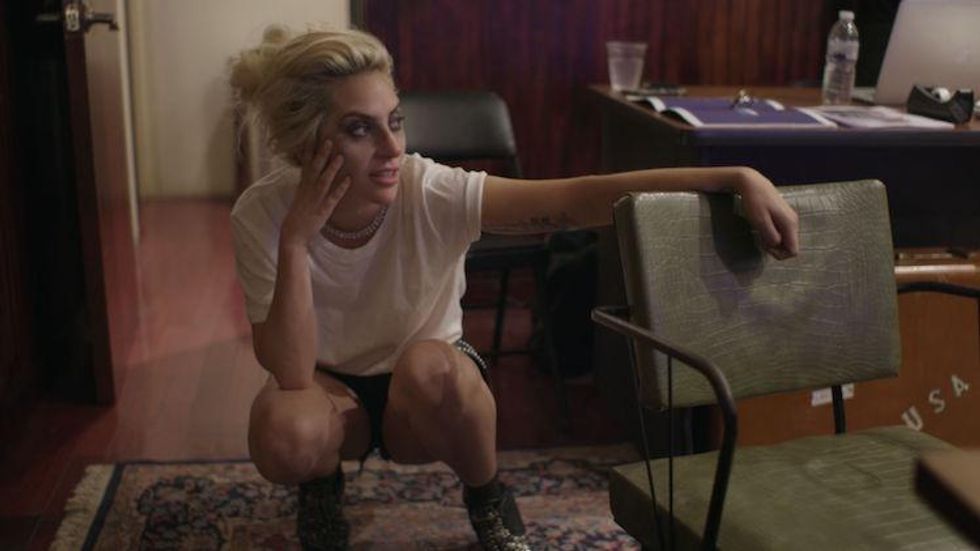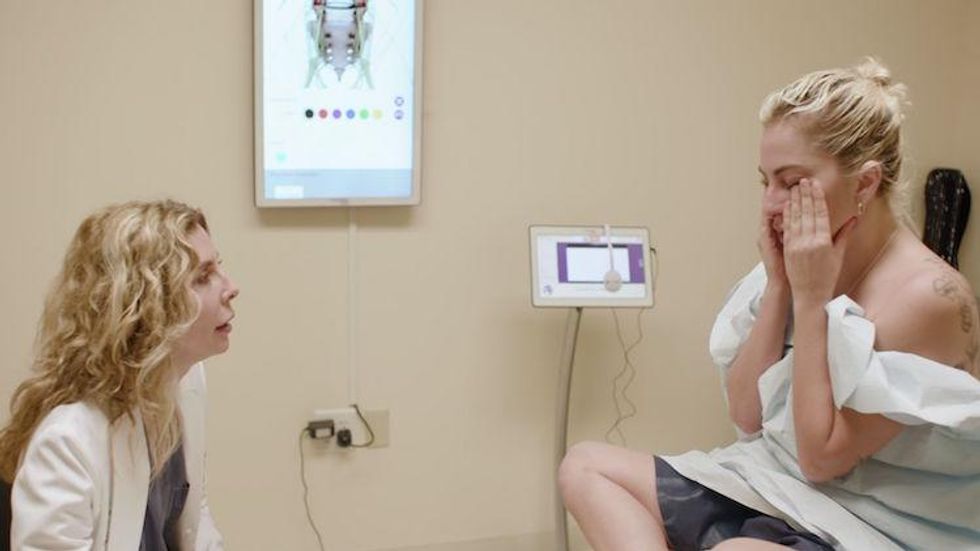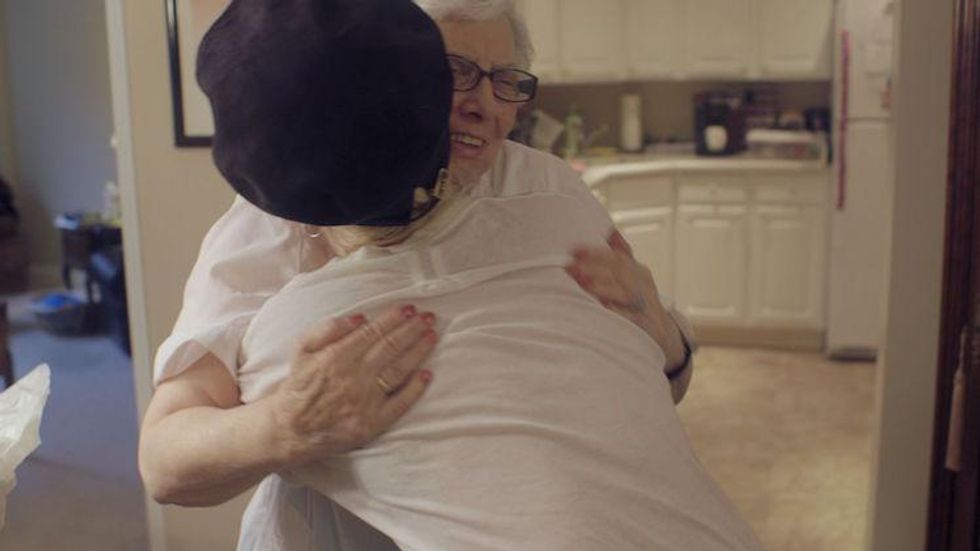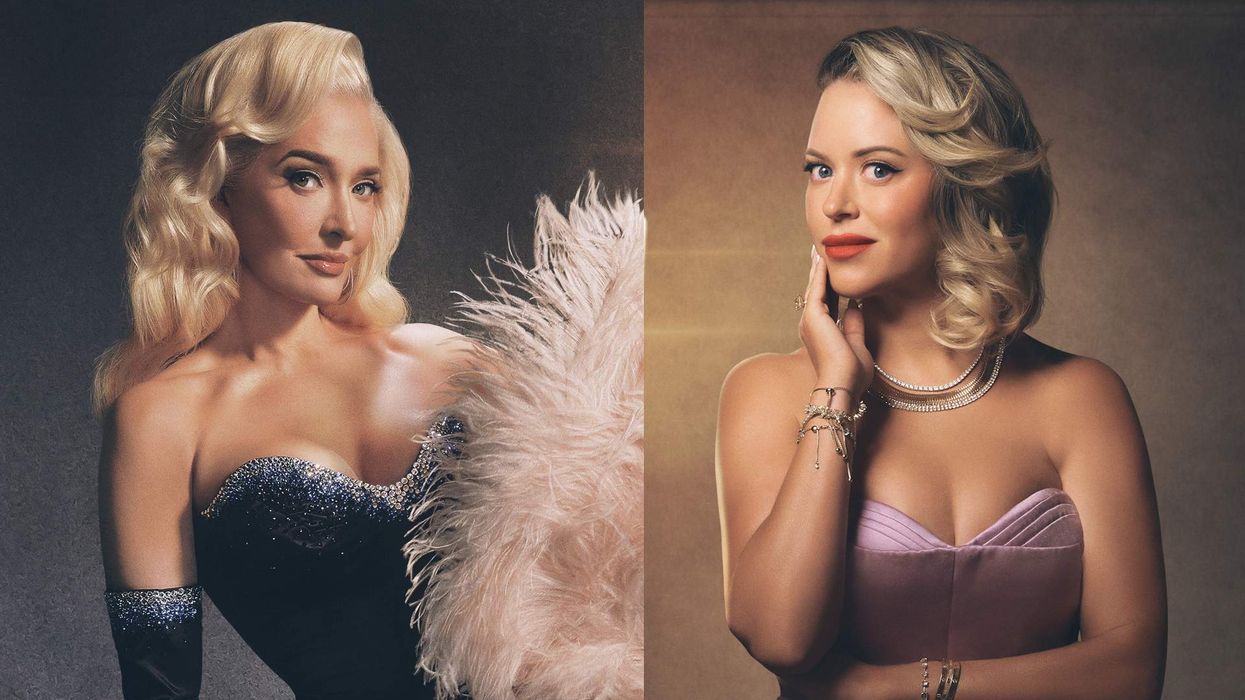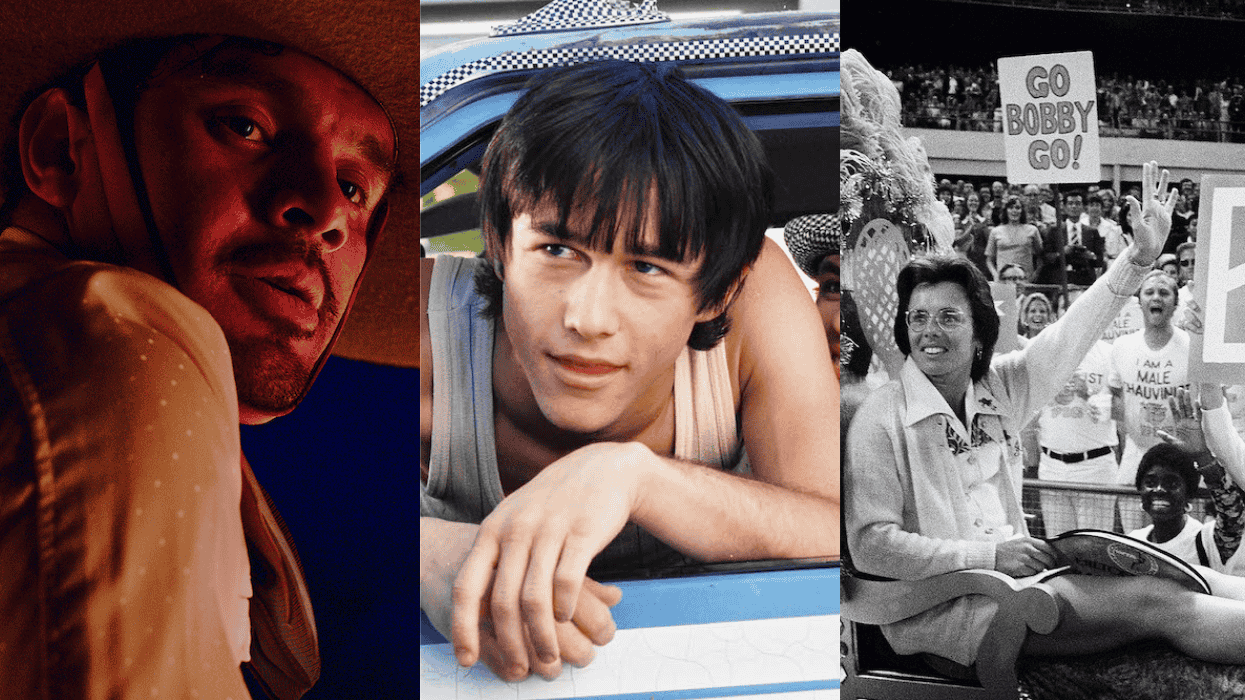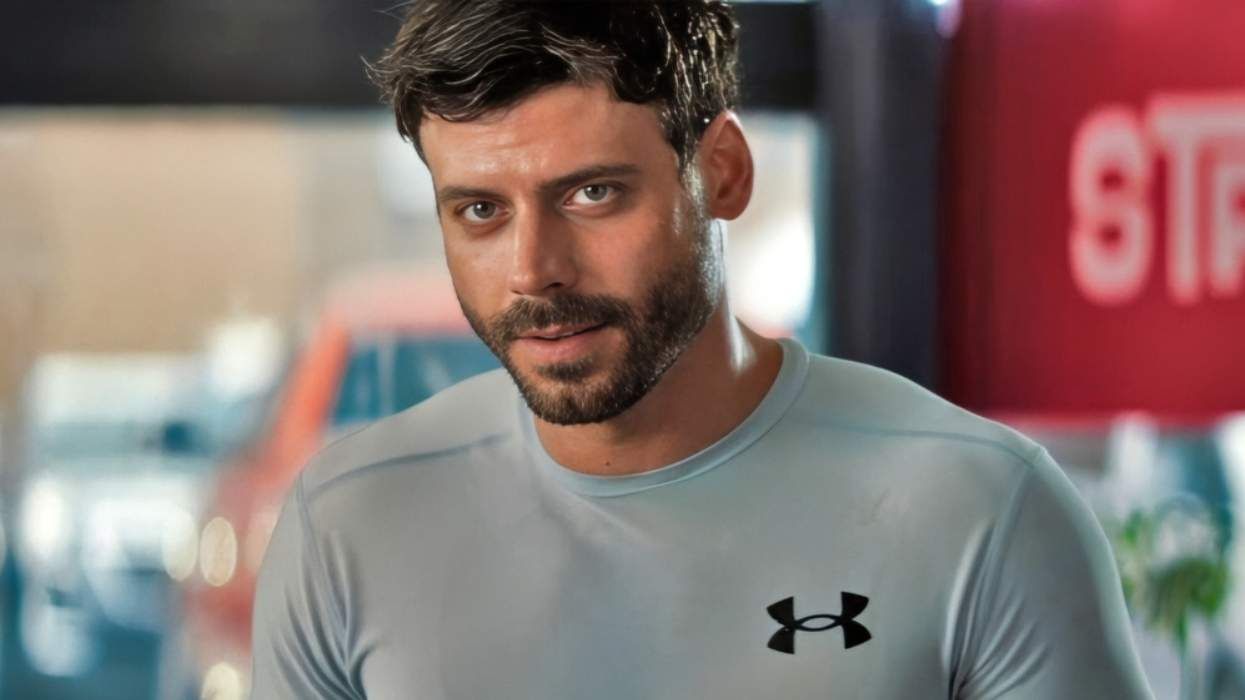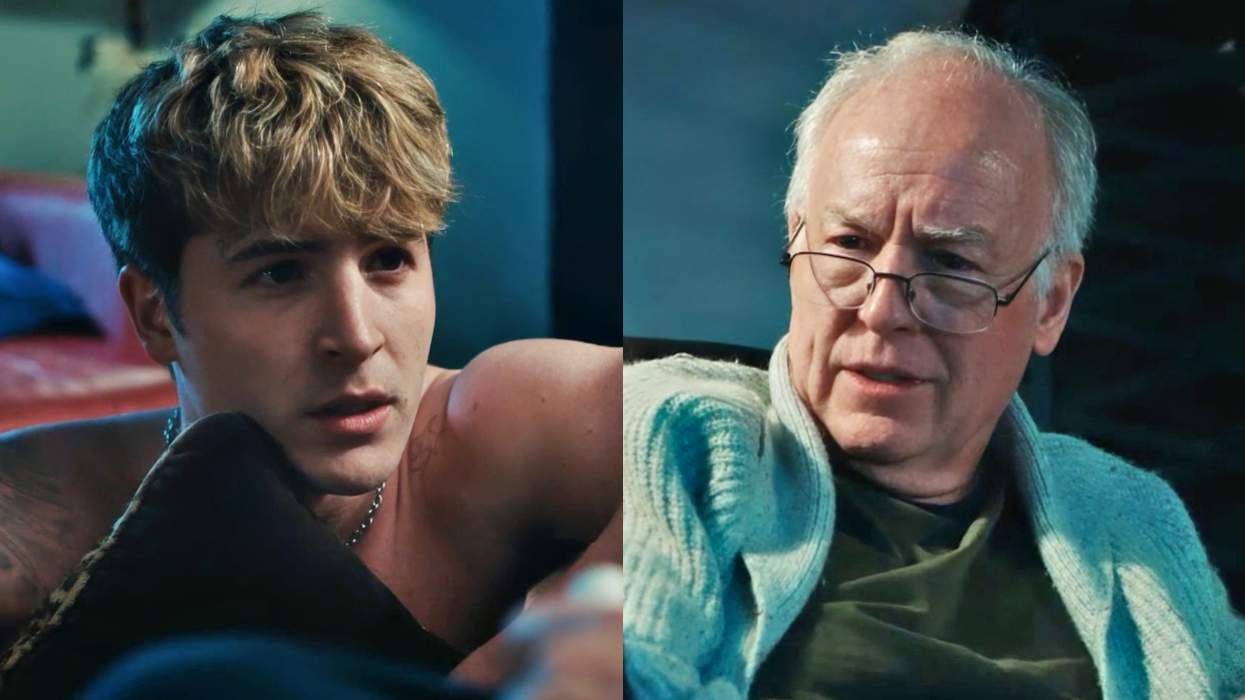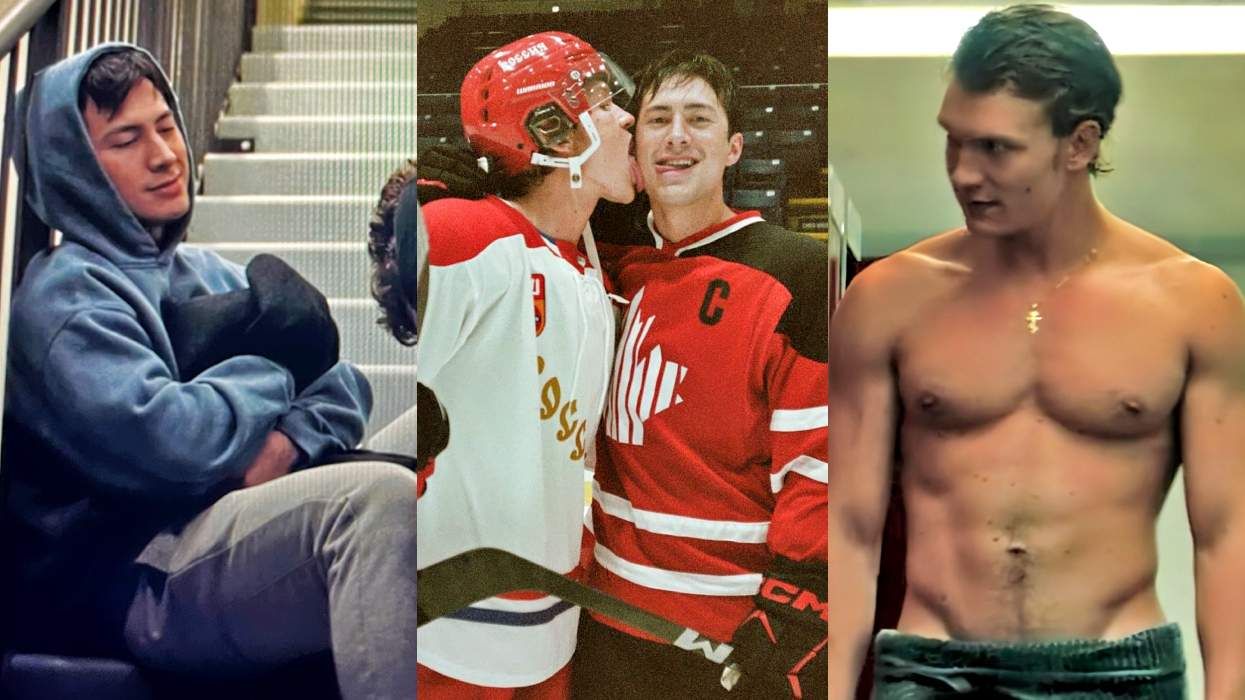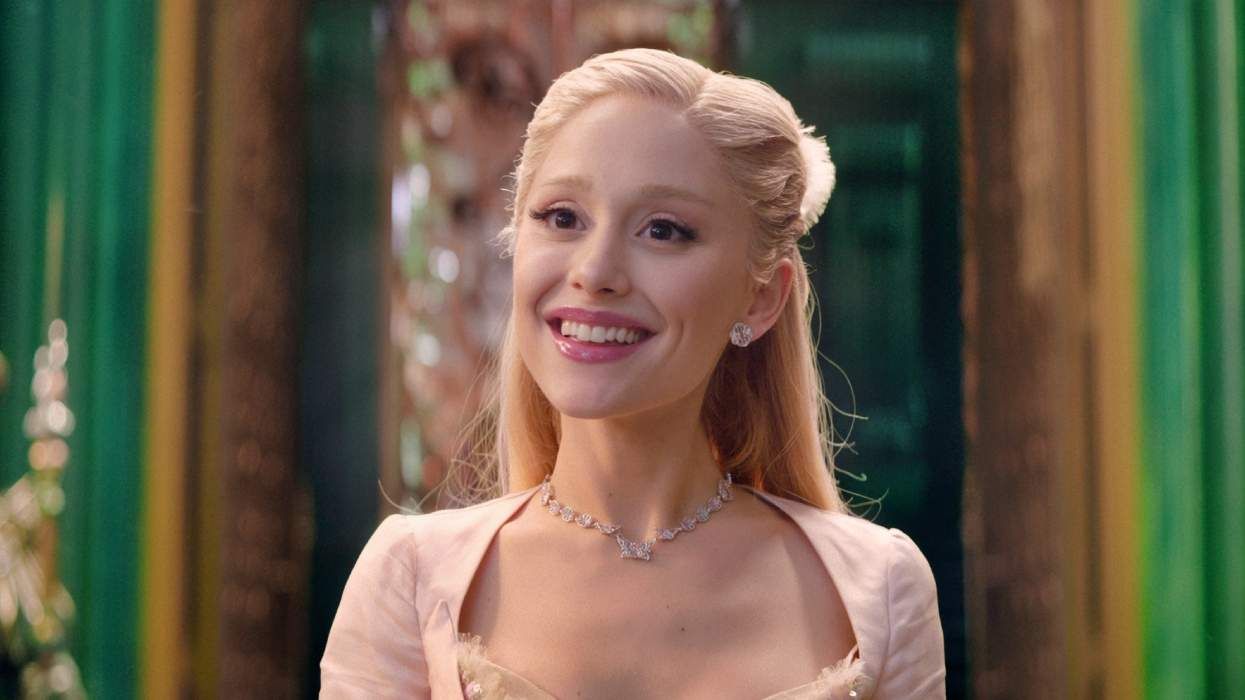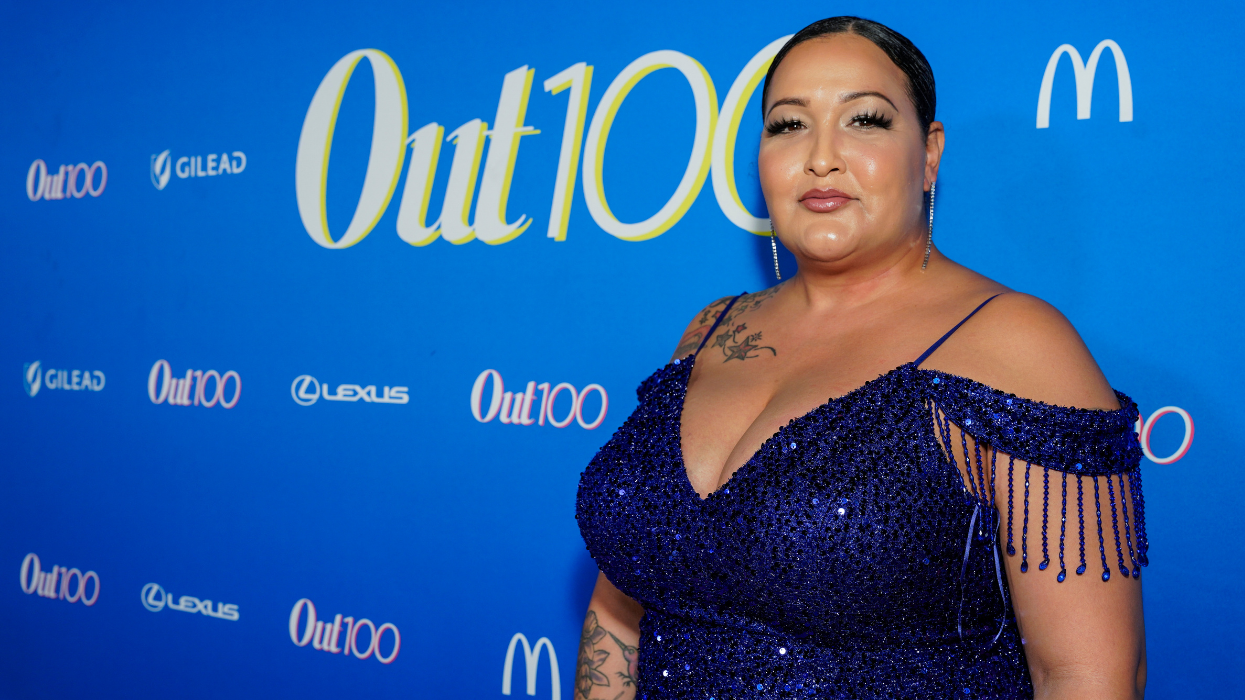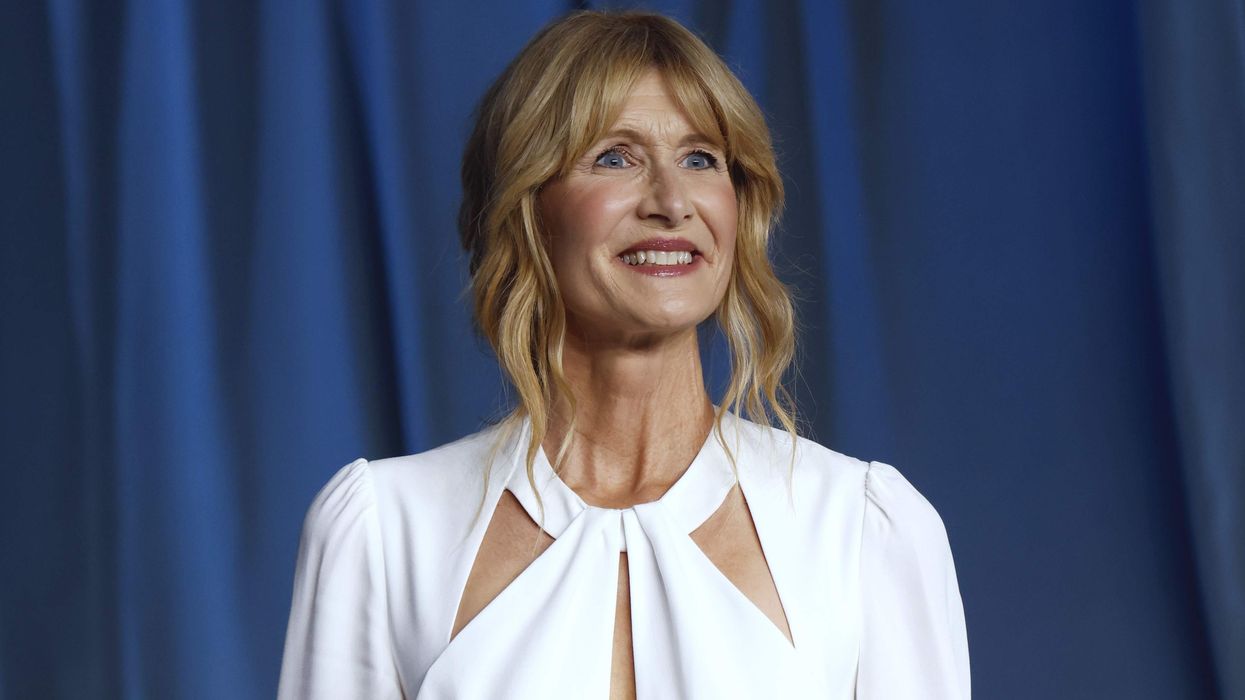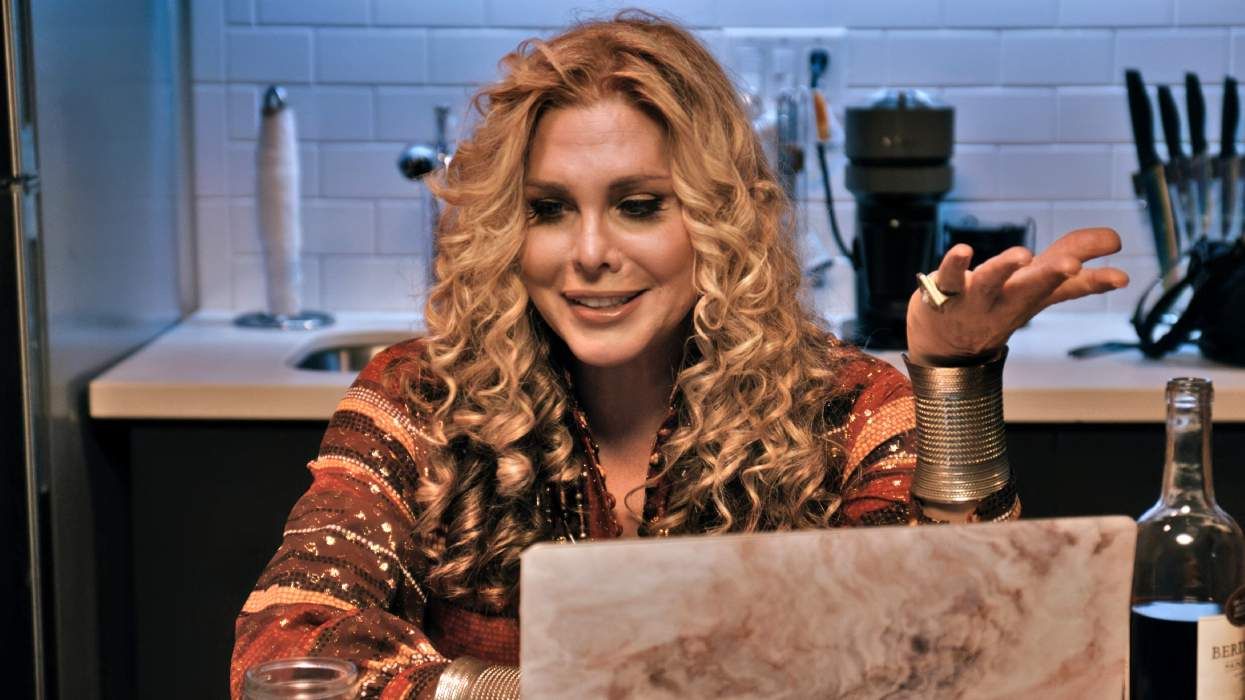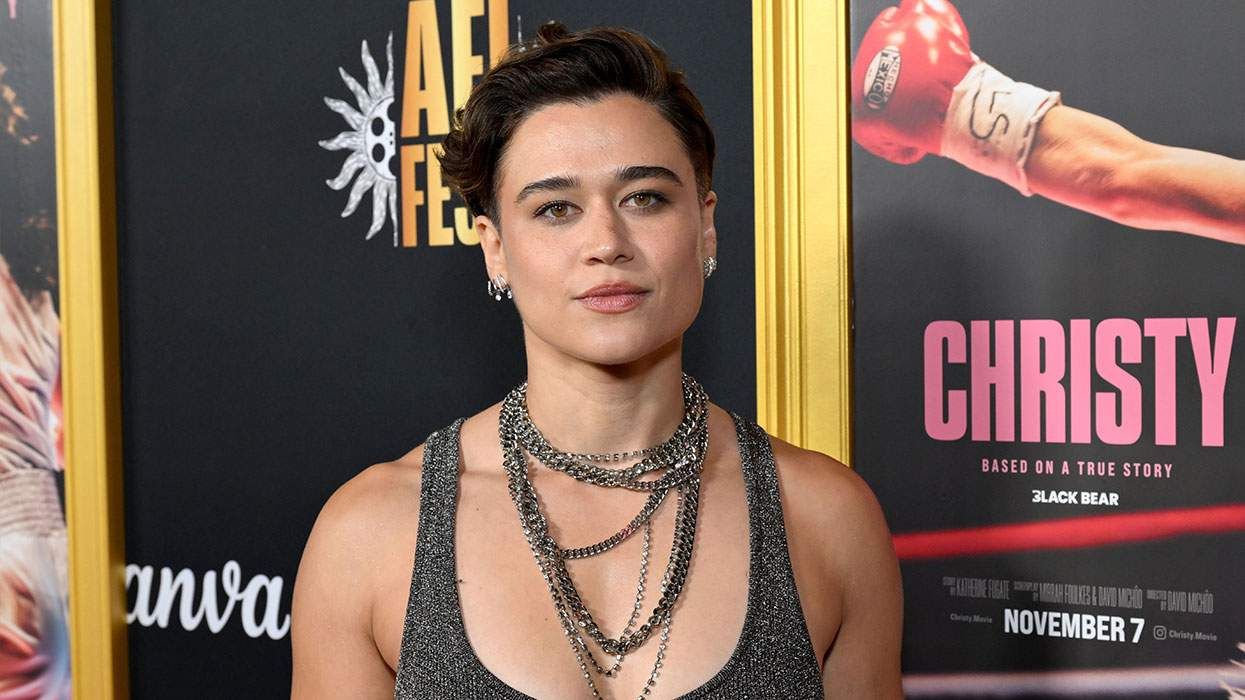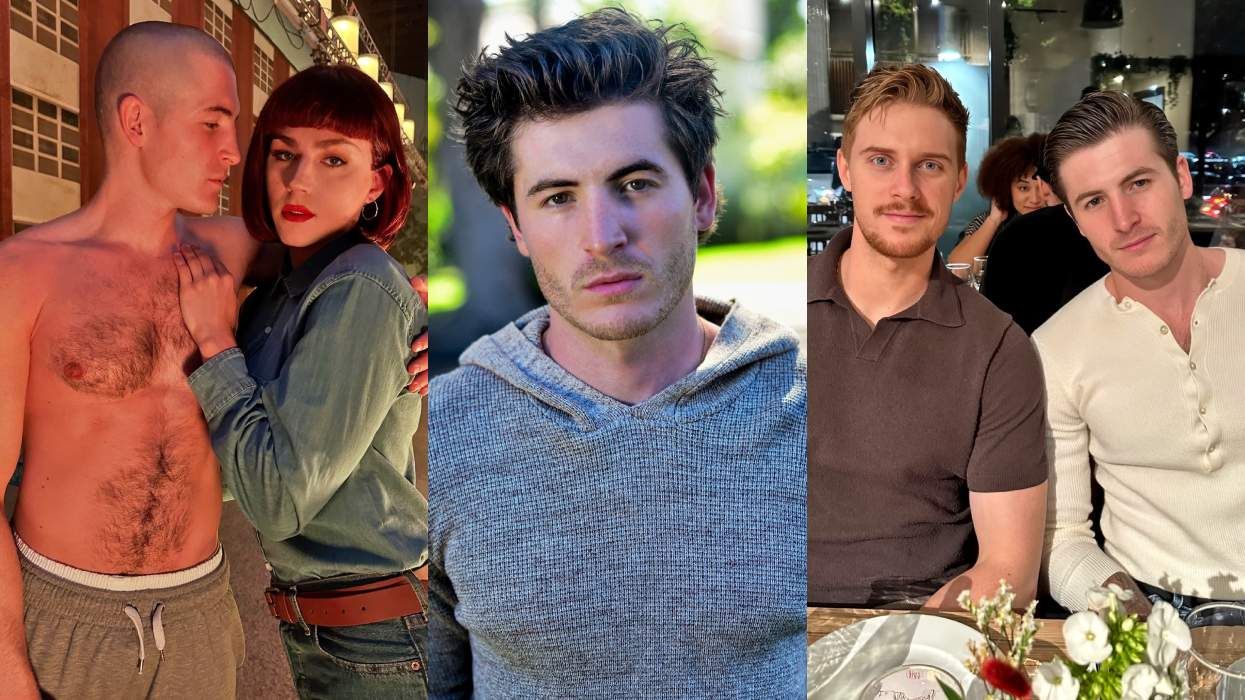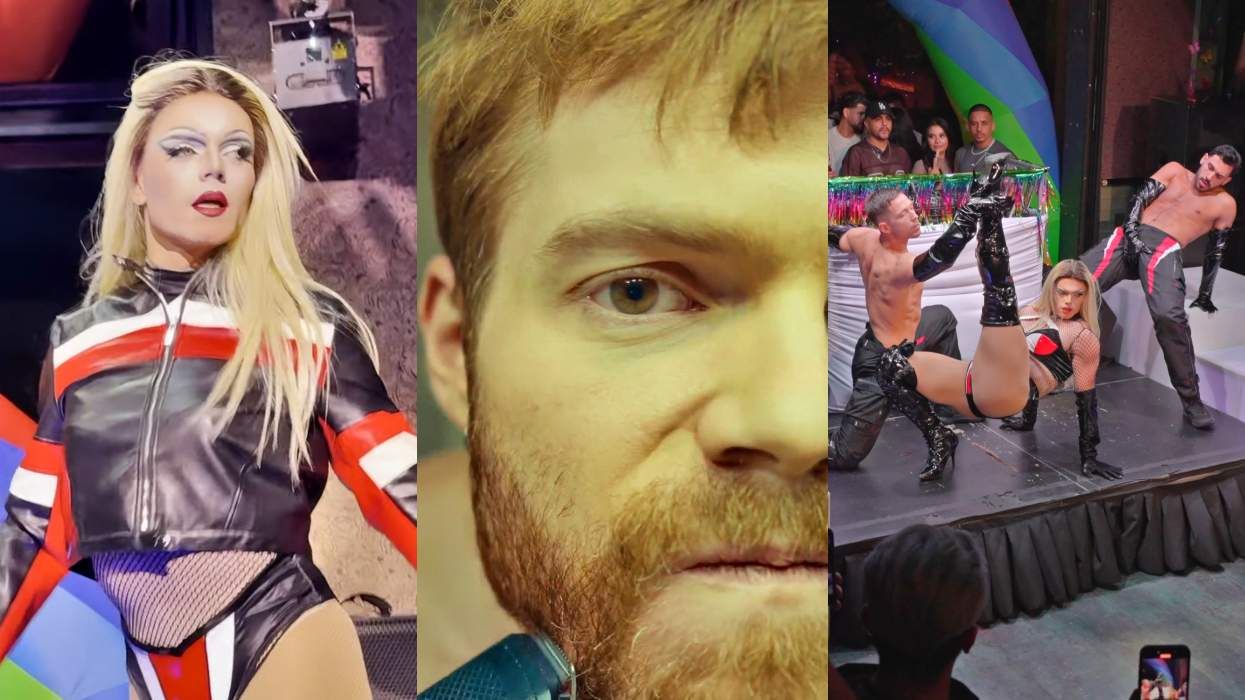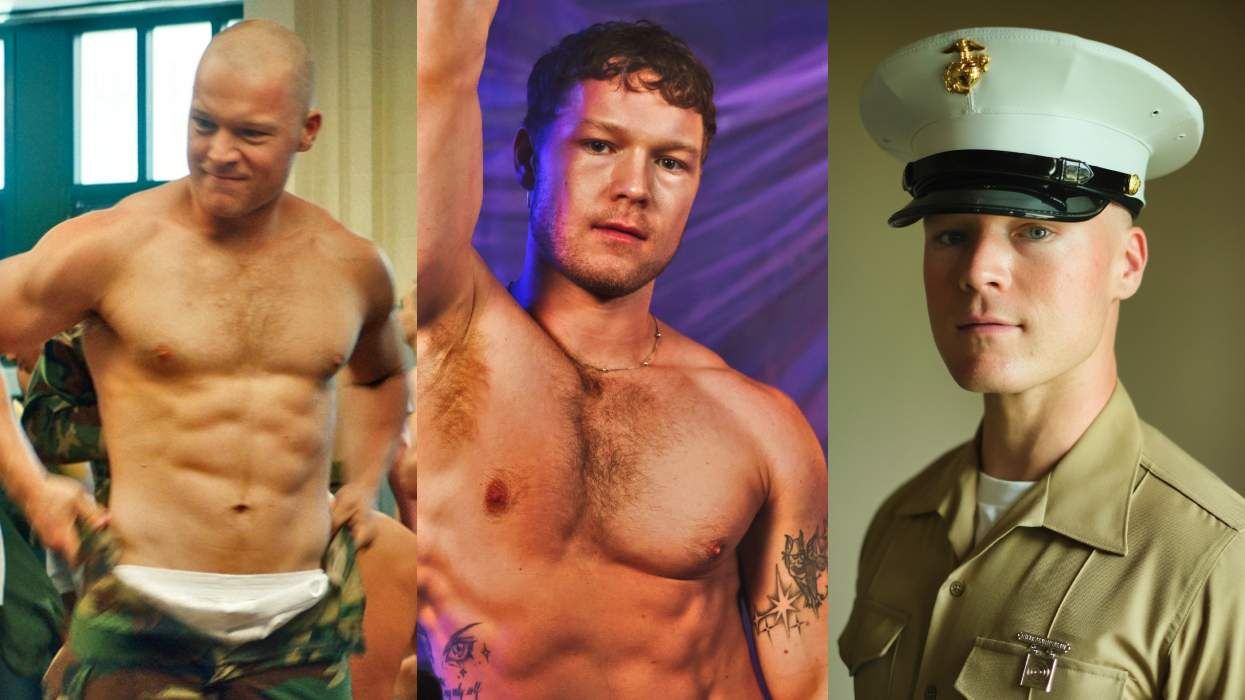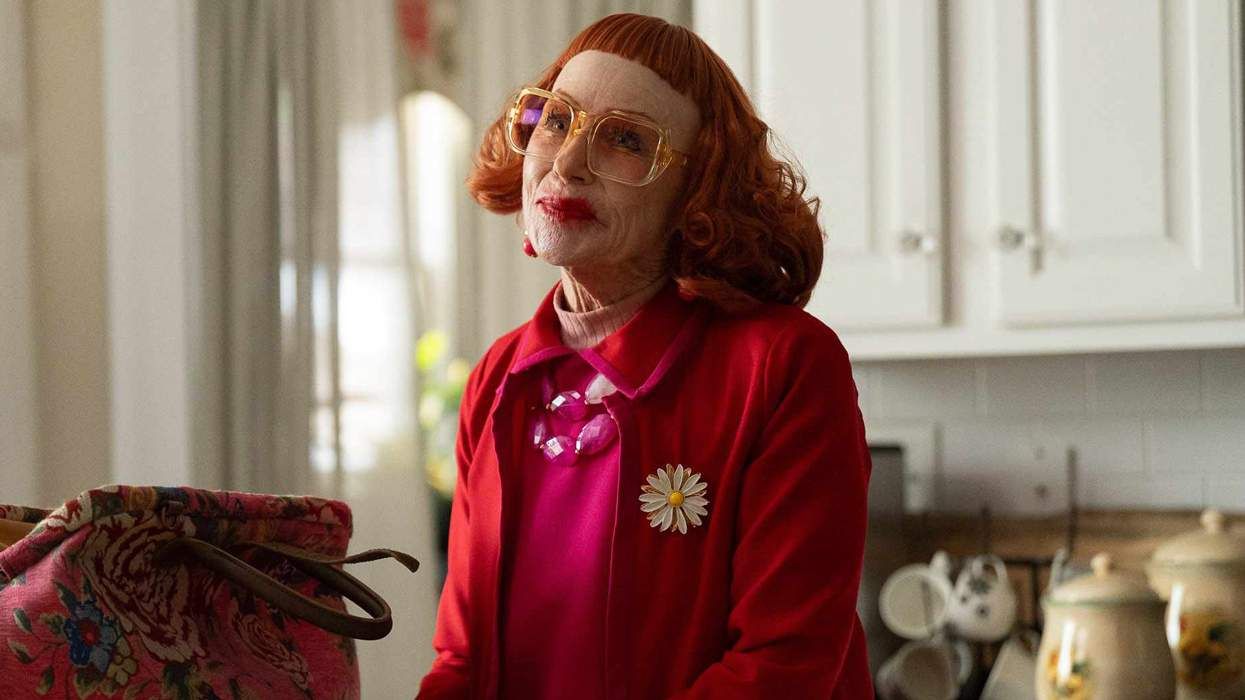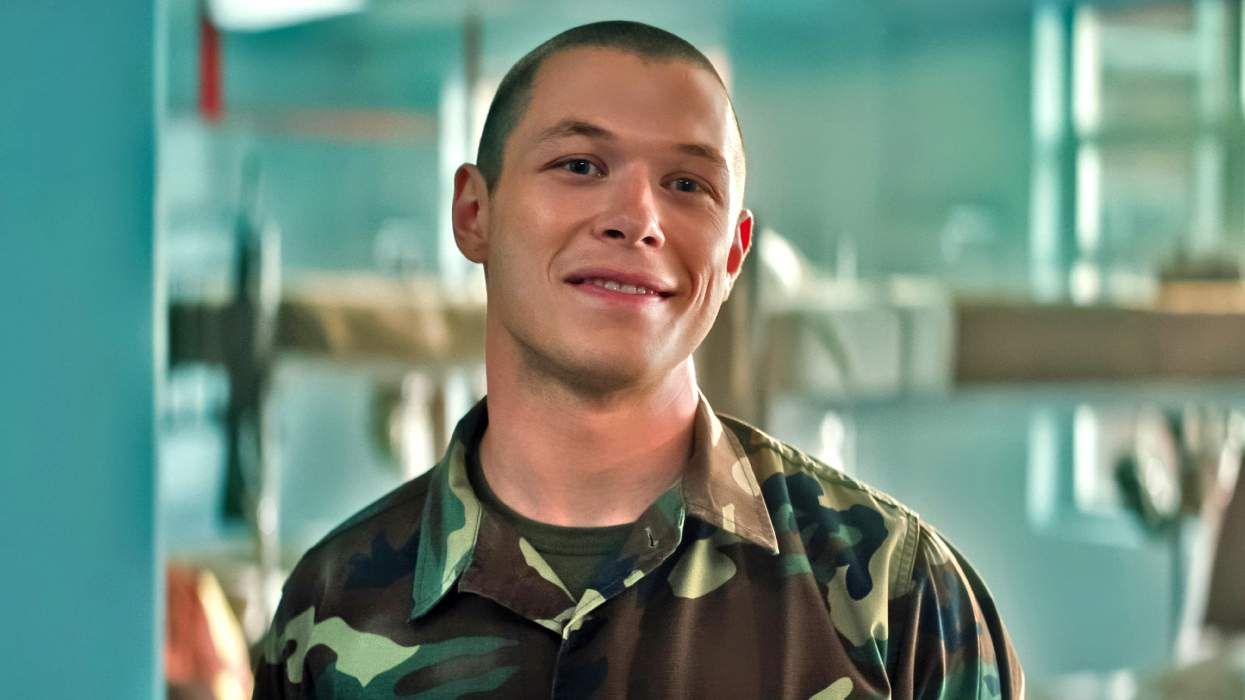The past year has seen a drastic shift in the way Lady Gaga approaches her work, creating a world inspired by the death of her father's younger sister, Joanne, who died of Lupus at age 19. Through Joanne, whom she named her fifth studio album after, Gaga's abandoned the untouchable theatrics of her former self for a more intimate, stripped down artist--one she's carefully unraveled to let her fans in closer than ever before.
Part of Gaga's promised transparency is a new Netflix doc, Gaga: Five Foot Two, which allowed queer director Chris Moukarbel to follow her for eight months during the making and roll-out of Joanne. The film, out today, welcomes Moukarbel as an engaged witness, capturing Gaga's severe highs and lows without the musician controlling her public narrative.
Through Moukarbel's lens, Gaga's shown collaborating and crying with producer Mark Ronson in-studio, battling swarms of screaming Little Monsters in the midst of extreme exhaustion and working through episodes of full body muscular pain. Five Foot Two offers a scope into the reality, or sculpted reality, of pop's biggest star--but as Moukarbel underlines, his documentary is a portrait of Gaga, not objective journalism.
We caught up with Moukarbel, below, to reflect on him getting inside Gaga's challenging reality.
OUT: How much of this documentary was a big corporate production?
Chris Moukarbel: It wasn't really corporate at all. Financing was corporate--LiveNation made the investment and my production company co-produced it with them. But because of the intimacy and access, and the way the film really needed to be made, most of the production came out of my own pocket. I wasn't able to get a crew in a lot of the time because [Gaga] preferred to not have cameras around. It ended up being me and a camera for a lot of the production.
Did Gaga first approach you?
[Gaga] reluctantly entered into this. She was open to do it, but didn't really want a documentary made. Her manager, [Bobby Campbell], thought it might be worth a shot after him and I talked about the approach and style I had planned for it, which really meant not getting into the past or any tropes you could get in a pop doc. It was really about keeping the frame narrow on Gaga and seeing what came out of that.
Did you have a relationship Gaga before making this doc?
No, she really had to trust me. But she's very intuitive and if she didn't feel safe around me, she wouldn't have gone forward with [the doc] at all. It grew very slowly and organically with just me following her to the studio and shooting. In my mind, there was a much bigger film there, but I didn't want to push too hard. I wanted her to feel comfortable with me and my vision. She never ended up watching the movie until the premiere a week ago. It was insane for me to sit there and watch her watching it after all that time. Removing herself creatively and from that role she typically takes in overseeing her own projects made for a better movie and she understood that.
What was your original goal for this film?
I wanted something that was cinematic and felt intimate, but this isn't journalism and there's no objective truth to this. I make portraits and this is a portrait of someone I have always found fascinating. From my perspective, I'm happy with the portrait and I feel like [Gaga's] happy. I don't make work to humiliate people; I don't do reality TV. I want the subject to feel good about it afterwards, even if there's an unsettling scene that's challenging for them. That's how you get to the humanity in the story.
How long was the filming process?
I started shooting back in June of last year and it was about 12 months altogether until the final edit. I start editing footage the same day I film. That's my way of finding the story. I'm shaping everything almost like a sculpture. As I'm making this thing, I start to realize what it is and what it needs. Making a doc is really different than making a scripted film, where you write and execute it. In this case, you can't write in advance, but you're urging the universe in a certain direction. There's things you want to see happen or that you want to uncover, so it's like writing in real time.
As someone who's not Lady Gaga famous, how was it to experience her fans firsthand?
It's stressful to be in that crunch, and it's still stressful for her. You can see it visibly--it causes her a lot of stress because you snap into this fight or flight mode when you have dozens of people clawing at you and calling your name. I don't think she's ever gotten used to it. She knows it's part of her role and she's gotten accustomed to it, but there is a lot of obvious stress she experiences in those moments. You can feel it afterwards when she gets in the car--her pupils are dilated, she's panting. It's not like anything anybody can relate to.
The scene where she's going from one studio to another, and fans are screaming, "Mommy"--it's dizzying and, for a brief moment, feels like a surreal, horror film.
I cut that scene so that it feels like a hall of mirrors. That's the only place in the movie we flash back to previous versions of Gaga with archival footage. That was an opportunity as she's walking from the door to the car to reflect back on all the different versions of herself--all the different times she's done that walk. It's really something that's defined her career, the paparazzi photographing her walking from a doorway to a car. She was the first pop star of the social media era, and she understands how to leverage that walk. She treated it like a runway, and would change her look on a daily basis--a completely different silhouette, costume and identity every day. It had a lot to do with propelling her forward as a pop star.
Do you think Gaga enjoys being famous?
I don't know if she can think about it objectively any more. She's been famous for so long and obviously she courted it. People always think of it as a faustian pact with the devil, and to a certain extent there is that element. She strove for it hard at a young age and she got it, which nobody ever does. I'm not asking for people to feel bad for Gaga, and she certainly isn't either. She's living her life, but when you're inside it, Gaga's reality is challenging in a way a lot of people couldn't handle or comprehend.
Do you think she handles fame well?
Yeah, I do. I think that may be something she's not given credit for. I've met a lot of famous people and they stop listening to other people--they stop seeing other people. She's different. Despite all the excess fame, she's still interested in the people around her. She asks questions, she checks in with everybody. She has a great family she's really close with and they're with her on tour a lot, so that's definitely grounded her. A lot of other artists at her level have succumbed--either literally died or crashed and burned--because it's nearly impossible to maintain, but she's managed to handle it very well.
How much did Gaga actually allow you to shoot?
I told her at the beginning that I was going to shoot everything I saw, but that she has agency and can ask me to shut the camera off. She didn't ask me to very often. If she did, it was because people were talking about somebody else who wasn't in the room. She was sensitive about not wanting people who aren't a part of [the doc] to be documented in any way. Other than that, she really let me roll and forgot about me. It was important to create that dynamic. There's a bond we have that you form when you're filming somebody. It's a weird relationship and one-sided--all my focus is on her, and at the same time, I'm trying to stay out of focus because I didn't want her to become conscious of me.
Were there moments you noticed she was aware of you?
It's hard with her because she's so used to having cameras on her. She can really disengage, but that said, cameras always affect a room. Even if it's not affecting her, it's affecting someone else and she's picking up their energy. It's never truly fly on the wall. I allowed her to talk to the camera and included that in the film because I didn't do interviews and realized early on that she was going to naturally speak to the camera, so I just embraced that. It makes everything more real. Here's a real person, there's a real camera in their face and they're going to react like anybody would.
Did you anticipate Gaga's fibromyalgia being such a defining element?
I had no idea. It was really scary for me the first time I saw her have a pain episode. On a fundamental human level, you want to help someone when they're in that situation, but there's really nothing I could do. She had people who would help her and it's something they've been working through for a long time, but she allowed me to shoot. It was kind of the only thing she felt needed to be in the film because she's always using her platform to put out positive messages. Her feeling was that there's a lot of people who struggle with this and if they can see her struggling, it could shed light on their own experience.
The scene where Gaga plays "Joanne" for her grandma could've been much more emotional, but the grandma holds back. Tell me about witnessing that.
That was interesting to watch, because there is a little bit of tension there. Gaga's grandmother comes from a very different generation. She's Depression-era, a child of immigrants, lost her daughter who was 19 years old. She's had some rough times, so it's an interesting turn of events when your granddaughter turns out to be Lady Gaga. She couldn't be a more frank, old-school woman, and Gaga writes this beautiful song for her about the death of her daughter. It's this heartbreaking scene, where her father's there and everyone's sharing this healing moment. But there's also a moment where the grandmother hugs Gaga and says, Good luck with all this, dear, and don't become too maudlin. To hear someone telling Lady Gaga to not become too maudlin--who could say that except her grandma? It was the end of a journey, and it came through her grandmother letting her off the hook.
The Joanne era is all about pulling back Gaga's layers and being personal with her fans. While you were filming, did you ever find this intimacy to be a performance?
That's an interesting subject and something I like to investigate in my work--ideas around performance and identity politics. The film is not trying to claim, This is the real Gaga. That was never my objective. I think the press likes to run with that--they're the ones saying it's authentic or she's stripped down. I think it's more complex than that. She's very raw and real--far more than most people would be in her position on camera. But, again, this is a portrait, not journalism with an objective truth. People will take whatever they want from that and people are going to be cynical about whether or not she's being real, but I question people's authenticity when I'm sitting in front of them, let alone having a camera there.
She's explored that dichotomy of personal versus performance throughout her career.
I don't know where that line is drawn between your authentic self and the one you present to other people. For [Gaga], she's playing with those themes, which is more enlightened and interesting to me than someone who's unchallenged. Mick Jagger, that was kind of a bullshit persona. There's an element of misogyny in there, as well. People expect that those rock n roll gods were so real when they had highly calculated personas. With women, people demand a level of authenticity and we're quick to assume they're not giving it to us.
You open and close the doc with Gaga's SuperBowl performance. Why?
It's a really stressful project--it's 12 minutes, it's live and hundreds of millions see it. It takes a certain athleticism to pull off something like that and she did it beautifully, so I'm really proud of her and thought it'd be an interesting way to bookend the film. The shot at the beginning is just her feet rising up slowly and that meant a lot of different things for me--kind of hat-tipping the SuperBowl, but also the nature of her walking this tightrope and always being on that line.
Photos Courtesy Netflix


